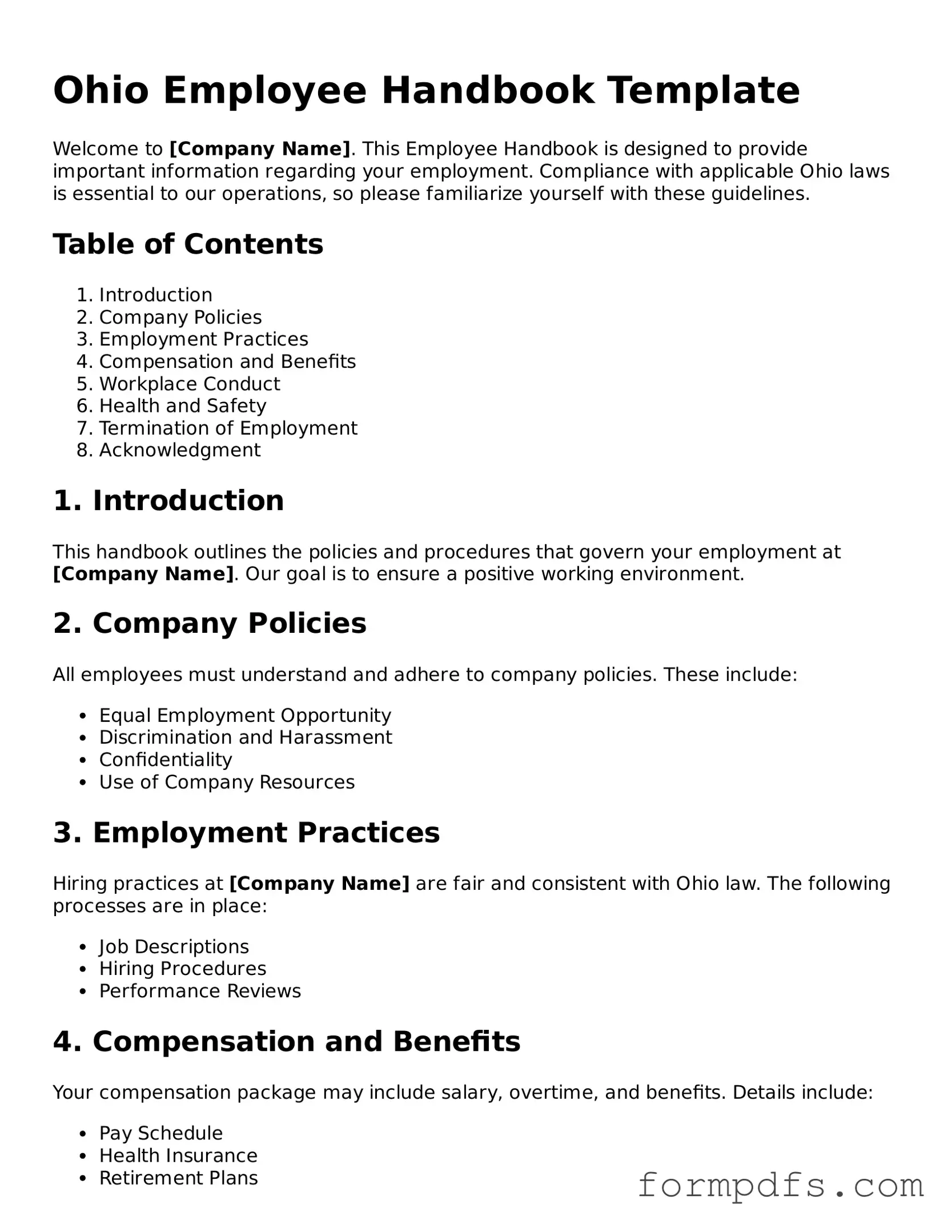What is the Ohio Employee Handbook form?
The Ohio Employee Handbook form is a document that outlines the policies, procedures, and expectations of an employer in Ohio. It serves as a guide for employees, detailing important information regarding workplace conduct, benefits, and rights. This handbook is essential for creating a clear understanding between the employer and employees about their roles and responsibilities within the organization.
Why is it important to have an Employee Handbook?
An Employee Handbook is crucial for several reasons. It helps establish a consistent set of rules that all employees are expected to follow. This consistency can reduce misunderstandings and disputes in the workplace. Additionally, having a handbook can protect the employer by providing documented policies that can be referenced in case of legal issues. It also serves to inform employees about their rights and benefits, fostering a transparent work environment.
Who should receive a copy of the Employee Handbook?
All employees should receive a copy of the Employee Handbook, whether they are full-time, part-time, or temporary workers. New hires should be given the handbook during their onboarding process, while existing employees should be provided with updates whenever changes are made. This ensures that everyone is aware of the current policies and procedures, promoting a unified understanding across the organization.
How often should the Employee Handbook be updated?
The Employee Handbook should be reviewed and updated regularly, ideally at least once a year. Changes in laws, company policies, or workplace practices may necessitate updates. Keeping the handbook current helps ensure compliance with legal requirements and reflects the most accurate information regarding the company’s operations and employee rights.
What should be included in the Employee Handbook?
An effective Employee Handbook should include several key components. These typically encompass an introduction to the company, employment policies, workplace conduct guidelines, benefits information, leave policies, and procedures for reporting grievances. Additionally, including a section on safety policies and compliance with state and federal laws is essential for protecting both the employer and employees.
Can employees provide input on the Employee Handbook?
Yes, employees can and should be encouraged to provide input on the Employee Handbook. Soliciting feedback from staff can lead to a more comprehensive and practical document. Employees may offer valuable insights based on their experiences, which can help identify areas that need clarification or improvement. This collaborative approach can enhance employee engagement and satisfaction.
What should an employer do if an employee does not acknowledge receipt of the Employee Handbook?
If an employee does not acknowledge receipt of the Employee Handbook, the employer should take proactive steps to ensure understanding. This may involve scheduling a meeting to discuss the handbook's contents or requiring a signed acknowledgment form. Clear communication about the importance of the handbook and its policies is essential to ensure all employees are informed and compliant with workplace expectations.
